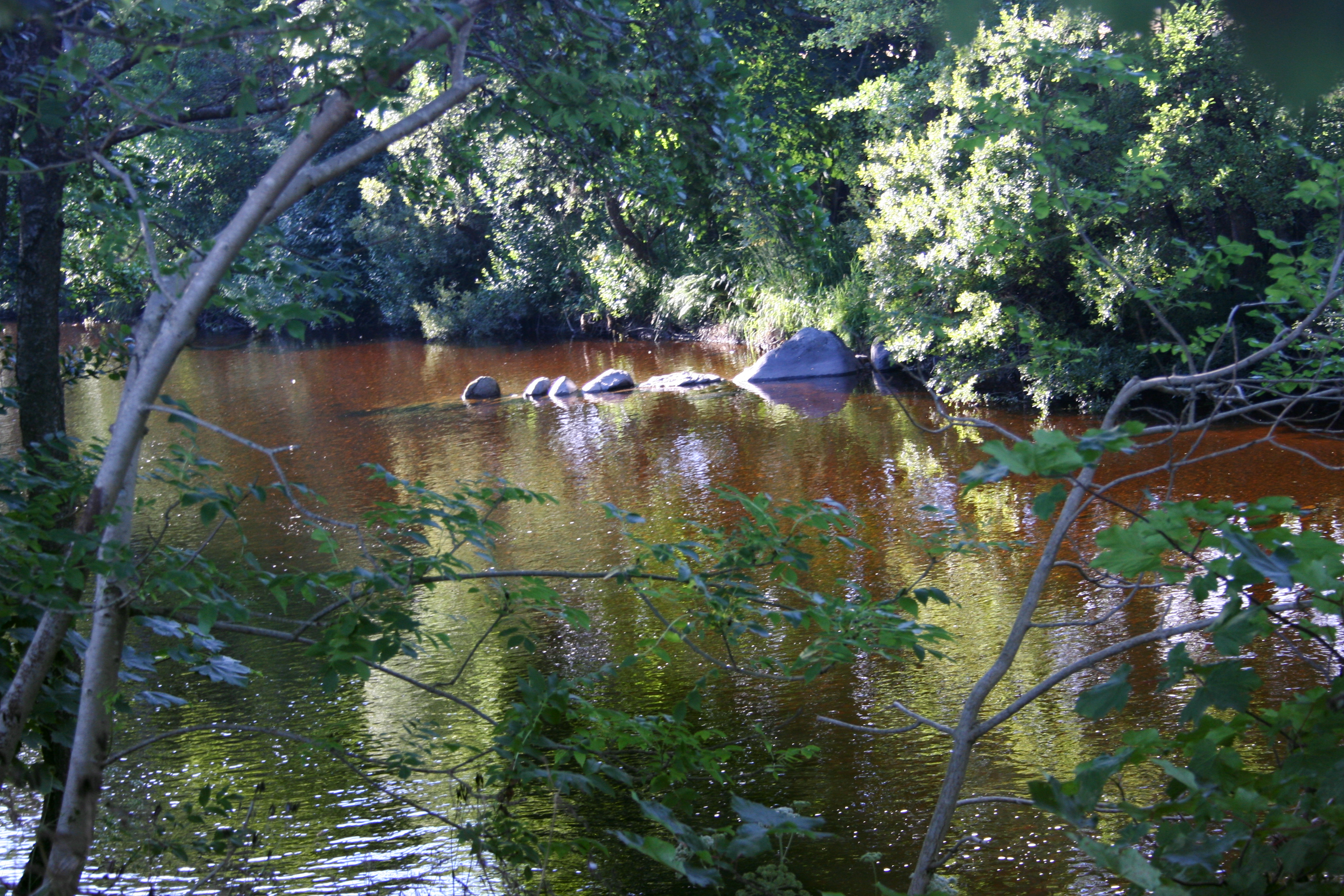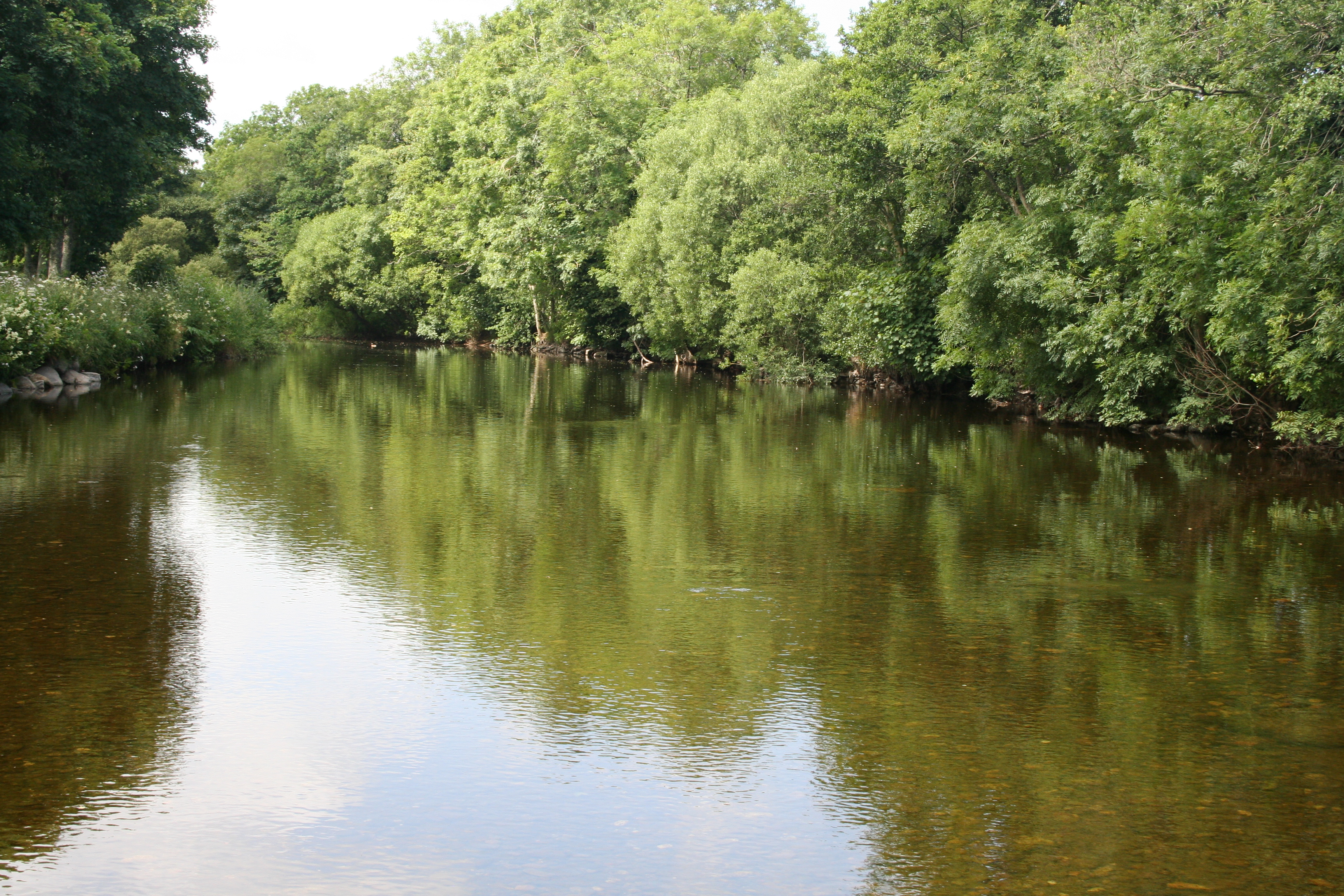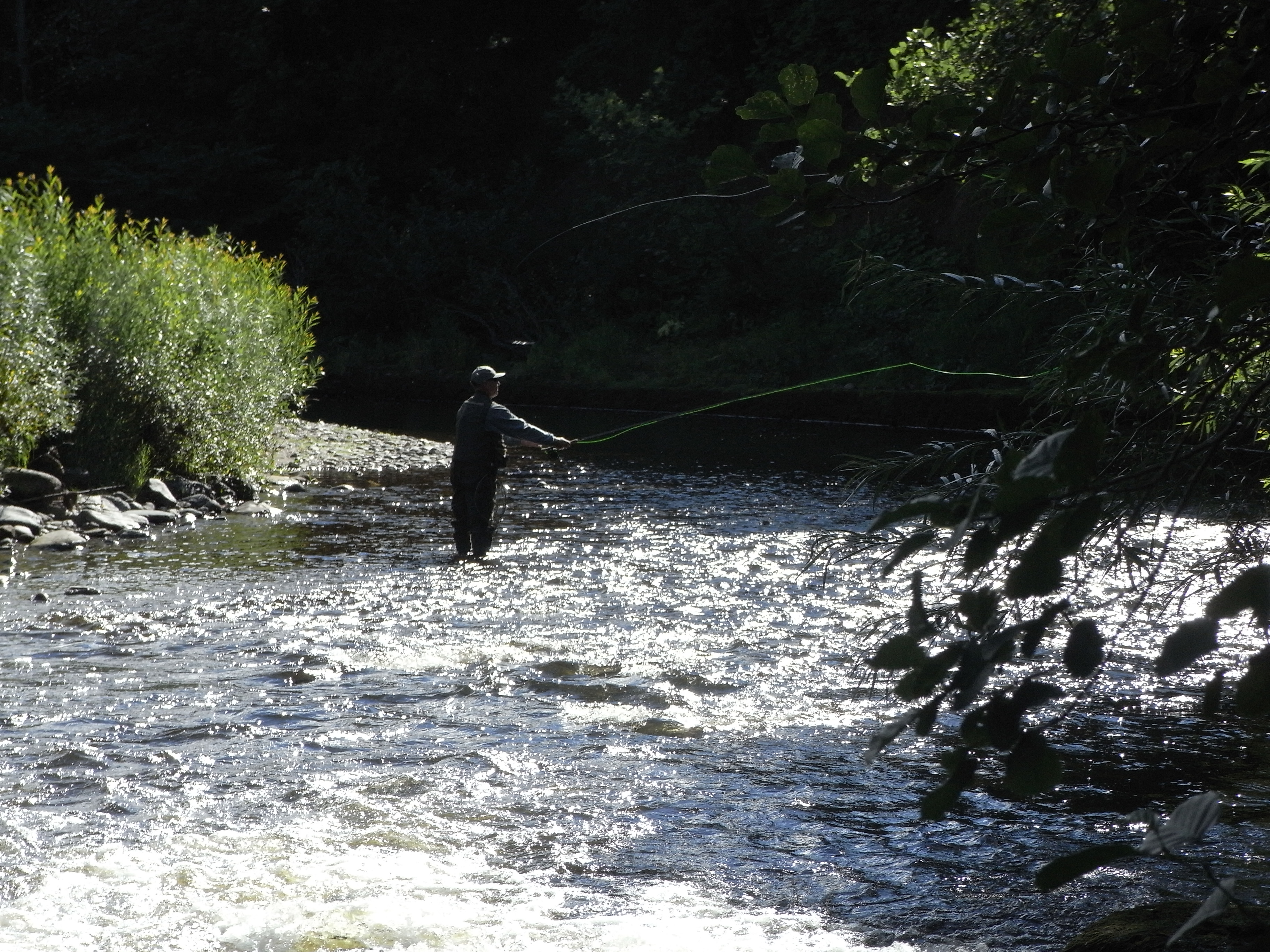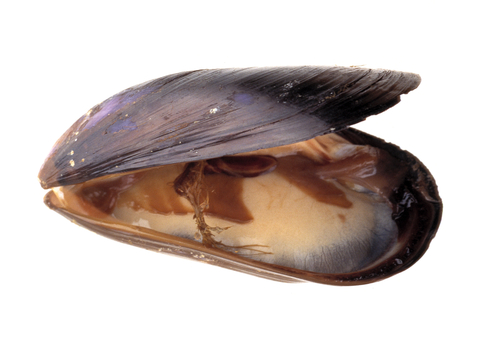These bulletin blogs represent news about Finavon and the South Esk, and my views as a riparian owner. While I may digress at times to write about other places, these are not the views of any other organisation, nor are they designed to promote the interests of any individual or organisation other than Finavon Castle Water and factors affecting the fishery. Tony Andrews
This summer has been warm and dry, unlike recent summers in the east of Scotland. The low rainfall and comments made by some people that “this year is the lowest level they have ever seen the South Esk” might give the impression that there is a serious drought and that the river is in some kind of trouble. In fact neither of these statements are true.
 Low water at the first N bank groyne in Tyndals Pool. Even in this low level the pool has ample room and depth to provide security and well oxygenated streamy lies for resting fish.
Low water at the first N bank groyne in Tyndals Pool. Even in this low level the pool has ample room and depth to provide security and well oxygenated streamy lies for resting fish.
While it is certainly the case that June, July and August so far have all been drier than at least the last five summers, these conditions used to be the norm. I only have to think of the summers of 1975 and 1976 when Peter Annand described the South Esk as “an unfishable ditch” to find two years when the river was lower and water temperatures higher. May and June 1995 were also dry, hot months and I remember the weather breaking at the end of June and bringing with the cooler water temperature a tremendous run of sea trout.
The Boat Pool at FCW in low summer water. This pool holds large numbers of salmon and sea trout in such conditions. It is quite normal – even in this year of very low sea trout catches – to see a shoal of 200 – 300 fish in this pool, plus a few salmon.
The early nineties were years of good sea trout numbers in the South Esk, with weeks at Finavon and Inshewan of over 50 not unusual. There were also some big sea trout – up to 12 lbs – in those years.There was plenty of evidence that the river was at that time producing good numbers of sea trout smolts, and that recruitment of juveniles was at a high level. It is possible that things have changed since then, and the cause may be the weather, perhaps resulting from climate change. SEPA measurements of the amount of water in the river, especially at times of peak flood events, has risen appreciably.
Casting into Red Brae Stream in bright summer conditions. This pool is best fished at dusk or dawn at such times. Red Brae always holds fish.
Increased energy in the river at times of big flood events will have moved many thousands of tons of gravel and cobbles, leaving larger diameter stones in the bed of the river and moving the smaller stuff downstream to new depositing zones. Bigger stones (cobbles) favour bigger fish spawning habitat, which may help to account for the improved numbers of salmon, as opposed to sea trout, in the river. Certainly, in the FCW catch returns there was a turn around in the late nineties from a predominance of sea trout to the situation as it is today where salmon and grilse catch numbers routinely exceed those of sea trout. Such consistent catch returns may well be an indication of the effects of climate changes in the South Esk catchment.
Last week we had a most welcome visit from Aberdeen University’s Department of Natural History. The visit was to look at the abundance and condition of Freshwater Mussels (Margaritifera Margaritifera) at Finavon. Here’s their informal note to me after the visit.
The freshwater mussel – Margaritifera Margaritifera – a splendid name for a mysterious mollusc. But an animal that tells us a lot about the health of the river. Its dependence on migrating salmon and sea trout to recolonise the upper reaches of the catchment when its larva (glychoda) hitches a ride in the gills of young fish. A wonderful piece in the natural jigsaw!
“We finished the Finavon section on Saturday. A few bullets:
- This section is unstable in sections, with large deposits of coarse and fine mobile riverbed sediments – typical of the South Esk!
- The riverbed in the upper sections (Boat Pool, Volcano) appear generally shallower and less stable than the deep, rocky pools further downstream.
- There are numerous stable patches, however and mussels found throughout.
- Some old engineered modifications (weirs, reinforced banks etc) noted, but the mussels seem to be regenerating in many places.
- This is evidenced by the relatively large numbers of juvenile mussels (<6.5cm shell length), which indicates that recruitment has been successful in recent years.
- Below the sluice bridge (Haugh’s Pool?), there is a “sink” bed, with hundreds of mussels settled in a large deposit of fine sand. These may have redistributed after the big flood last year.
- The riverbed does seem to have been changed in places (in the last decade), with mussels in new places and missing from old ones etc, again possibly linked to flood effects.
- Quite a few scattered shells – probably flood mortalities.
Overall, I would say the Finavon mussel beds are currently in pretty good shape.
The South Esk habitat does appear to be under heavy pressure, mainly from agriculture effects etc, but the mussel population appears to be stable, based on our findings so far.
Full details will be available later, but I wanted to pass you some info for now. SNH will have a full report and info if you wish to acquire all the data , probably next year since the South Esk survey is part of a larger, national mussel survey.
Hope this does for now. Happy to chat anytime about mussels. Thanks again for your time and permission to access.”
…………………………………………………………………………………………………………………..
For me that is great news because I have been worried about the condition of our mussel beds. Now we know that they are recruiting successfully in this middle section of the South Esk, we can but hope that the good work of SEPA starts to take effect on the amount of silt clogging our gravels and cobbles.
TA


